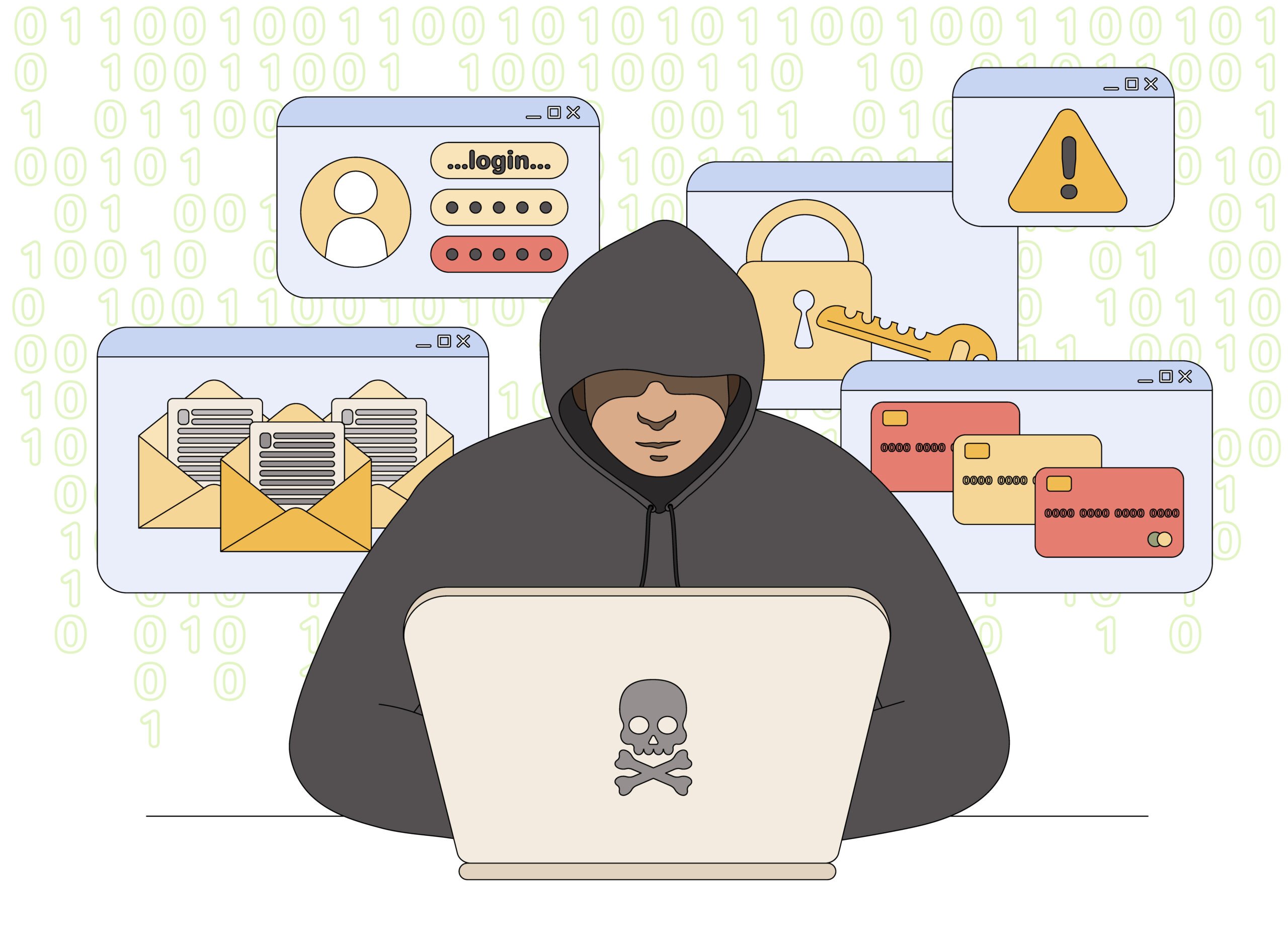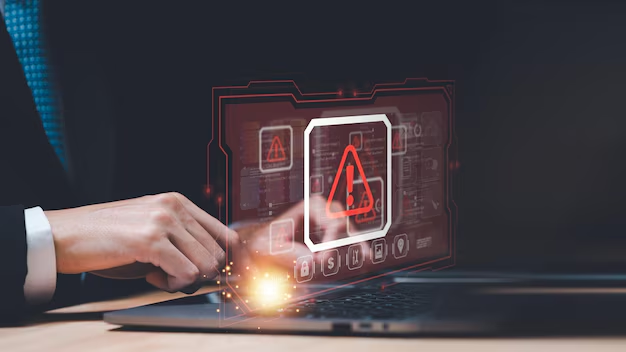Navigating AI Threats in Cybersecurity: Darktrace 2025 Report Insights
Artificial intelligence (AI) is reshaping the cybersecurity landscape, and organizations face unprecedented challenges and opportunities. The Darktrace 2025 Report sheds light on the evolving nature of AI-powered threats and their impact on businesses worldwide. This blog post delves into the key findings of the report, exploring the surge in AI cyber threats, the growing emphasis on cyber resilience, and the critical need to address the cybersecurity skills gap.
Introduction: Understanding the Shift in Cybersecurity Threats
As AI continues to advance, cybercriminals are leveraging its power to create more sophisticated and devastating attacks. The Darktrace 2025 Report reveals a stark reality: AI-powered threats are no longer a distant concern but an immediate and pressing issue for organizations across all sectors.
Jason Vanzin, CISSP and CEO of Right Hand Technology Group, emphasizes this shift: “The integration of AI into cyber attacks has fundamentally changed the threat landscape. Organizations must adapt quickly or risk falling victim to these increasingly sophisticated and targeted assaults.”
The importance of addressing AI threats in cybersecurity strategy cannot be overstated. As we navigate this new terrain, enhanced cyber resilience and skills development emerge as critical factors in safeguarding businesses against evolving AI-driven attacks.
1. Surging AI Threats: Challenges Faced by Organizations
1.1 Impact on Organizations and CISOs
The Darktrace 2025 Report highlights a significant increase in the prevalence and sophistication of AI-powered threats. Chief Information Security Officers (CISOs) are increasingly recognizing the gravity of these threats, with 78% expressing concerns about AI-enhanced attacks.
One of the most alarming trends is the link between AI-enhanced phishing campaigns and ransomware strains. These advanced attacks leverage AI to create highly personalized and convincing phishing emails, dramatically increasing their success rates.
“AI-powered phishing attacks are particularly dangerous because they can bypass traditional security measures and exploit human vulnerabilities at scale,” warns Jason Vanzin. “This convergence of AI and social engineering presents a formidable challenge for security teams.”
Learn more about the detailed insights in the Darktrace 2025 Report
1.2 Sophistication of AI-Driven Attacks
The integration of AI into cyber attacks has led to a new level of sophistication. AI-driven attacks can:
- Adapt in real-time to defense mechanisms
- Automate the discovery and exploitation of vulnerabilities
- Generate convincing deepfake content for social engineering
- Orchestrate complex, multi-vector attacks
These AI-enhanced techniques enable attackers to launch highly targeted and scalable campaigns, significantly increasing their chances of success.
2. Growing Cyber Resilience: Preparing for AI Threats
2.1 Increase in Cyber Resilience Among Organizations
Despite the growing threat landscape, the Darktrace report reveals a positive trend: organizations are becoming more resilient to cyber attacks. 60% of CISOs reported improved preparedness against AI threats compared to the previous year.
Several factors contribute to this enhanced resilience:
- Increased awareness of AI-driven threats
- Implementation of advanced security technologies
- Adoption of AI-powered defense strategies
- Improved incident response planning
The role of AI in augmenting human security teams is crucial in this improved preparedness. AI can analyze vast amounts of data, detect anomalies, and respond to threats in real-time, significantly enhancing an organization’s defensive capabilities.
2.2 Leveraging AI for Defense Strategies
As AI-powered threats evolve, organizations are recognizing the essential role of AI-powered solutions in their cybersecurity arsenal. The Darktrace report indicates that 64% of organizations plan to integrate AI into their security stack within the next two years.
Jason Vanzin emphasizes the importance of this trend: “AI is not just a threat; it’s also our most powerful ally in cybersecurity. Organizations that fail to leverage AI in their defense strategies will find themselves at a significant disadvantage against AI-driven attacks.”
To enhance cyber resilience amid evolving threats, organizations are focusing on:
- Implementing AI-powered threat detection and response systems
- Utilizing machine learning for predictive analysis of potential threats
- Automating routine security tasks to free up human resources for complex issues
- Developing AI-enhanced incident response playbooks
3. Addressing the Skills Gap: Overcoming Challenges in Cybersecurity
3.1 Insufficient Knowledge and Skills in AI
While organizations are making strides in adopting AI for cybersecurity, a significant challenge remains: the skills gap. The Darktrace report identifies insufficient knowledge and skills in AI as a top inhibitor to successful defense against AI-powered threats.
Key findings include:
- 68% of CISOs cite the skills gap as a major concern
- Only 42% of cybersecurity professionals feel confident in their understanding of AI
- Discrepancies in AI knowledge exist across different cybersecurity roles
Bridging this knowledge gap through education is crucial. Organizations must invest in AI security training programs to empower their teams with the skills needed to leverage AI effectively in cybersecurity.
3.2 Personnel Shortages and Hiring Challenges
Despite the importance of AI in cybersecurity, only 11 percent of respondents plan to increase cybersecurity staff in 2025, down from the previous year. This suggests that the skills gap is not being adequately addressed through hiring new personnel
This personnel shortage significantly impacts an organization’s ability to address the skills gap and effectively defend against AI-powered threats. To overcome these challenges, organizations need to adopt strategic approaches to talent acquisition and retention in cybersecurity.
Jason Vanzin offers insight on this issue: “The cybersecurity talent shortage is a critical issue that requires innovative solutions. Organizations need to focus on upskilling existing staff, partnering with educational institutions, and leveraging AI to augment their human workforce.”
Conclusion: Building Resilience Against AI Threats Through Skills Development
The Darktrace 2025 Report paints a clear picture of the evolving cybersecurity landscape dominated by AI-powered threats. While organizations are making progress in cyber resilience, the persistent skills gap remains a significant challenge.
Key takeaways include:
- AI cyber threats are rapidly evolving and becoming more sophisticated
- Organizations are increasingly leveraging AI for defense strategies
- The cybersecurity skills gap, particularly in AI knowledge, is a critical issue
To build resilience against AI threats, organizations must prioritize skills development and workforce training. This includes:
- Investing in AI education for cybersecurity teams
- Developing comprehensive AI-focused training programs
- Fostering partnerships with educational institutions and industry experts
- Implementing mentorship programs to share AI knowledge within organizations
As we navigate this new era of AI-driven cybersecurity, continuous learning and adaptation are crucial. By addressing the skills gap and embracing AI-powered defense strategies, organizations can enhance their cyber resilience and stay ahead of evolving threats.
Remember, in the face of AI-powered cyber threats, your organization’s greatest asset is a well-trained, AI-savvy cybersecurity team. Invest in your people, embrace AI technologies, and build a resilient defense against the cyber challenges of tomorrow.











